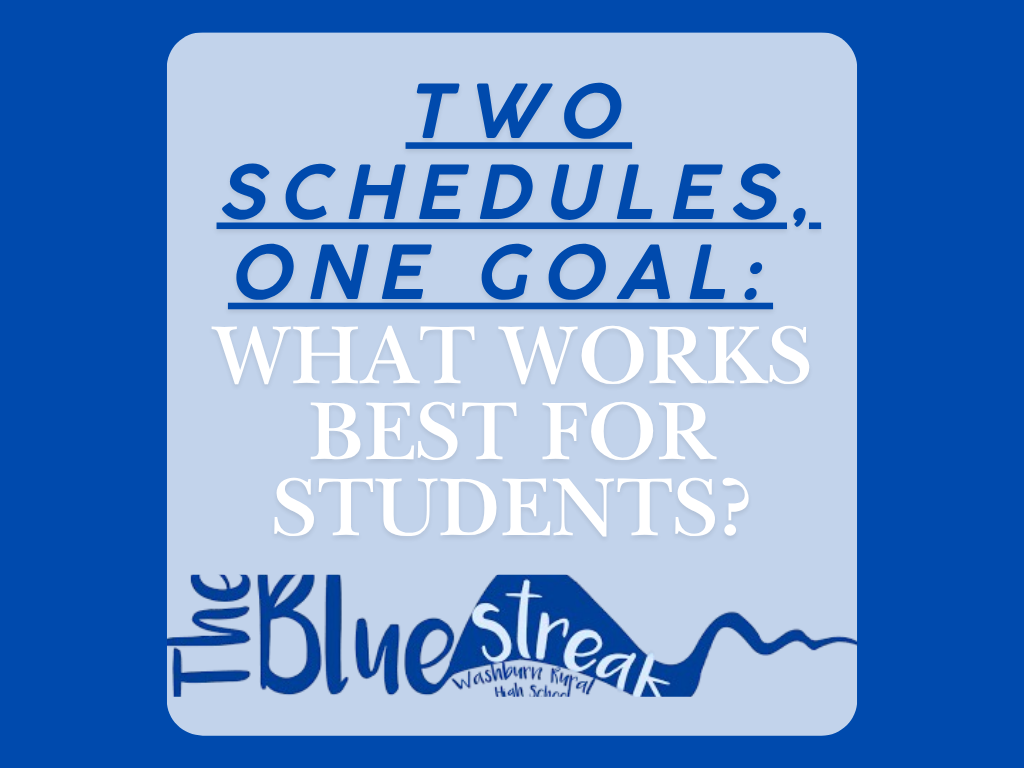At Washburn Rural High School, students follow a traditional seven-period schedule with shorter classes and a steady daily routine. However, many schools across the country are already doing block scheduling, where students attend fewer classes each day for longer periods. This raises the question of whether a block schedule would improve learning at Washburn Rural or make it worse for the students.
Block scheduling offers several benefits. With only three or four classes a day, students can focus more deeply on each class and have more time to do homework. Longer class periods allow for labs, projects, and discussions that might not fit into a 45-minute class. Students also tend to have less homework per night since they are only preparing for half their classes. This system can reduce stress and better prepare students for what college courses would look like. Teachers benefit too, as they have more time for lessons and personal instruction.
Despite its advantages, block scheduling has challenges. Ninety-minute classes can feel long, and if lessons aren’t varied, students may lose focus. Missing a single day can mean missing twice as much work, which can be difficult to recover from. Washburn Rural’s regular schedule offers more accuracy, for example, students see every teacher daily, keeping information fresh and assignments evenly spaced out. The current schedule also provides structure and variety throughout the day, which keeps students active and engaged. While block scheduling could allow for more in-depth learning, it might also make retention harder since students would meet each class less frequently.
In the end, both systems have clear strengths. The block schedule combines longer classes with daily meetings could be the best compromise. Until then, Washburn Rural’s traditional schedule remains a reliable system that balances pace, structure, and learning. this allows the students to not think their class never ends and can focus on one lesson for 30 minutes, then a longer lesson.







